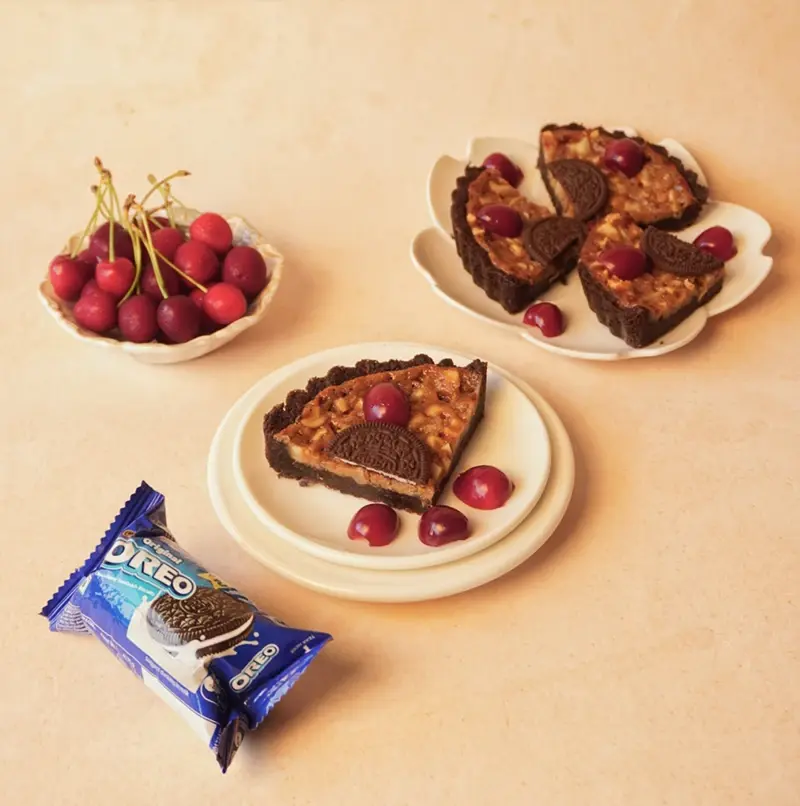- Home
- Articles
- What makes for the most delicious dessert recipes for cookies originating from England?
England loves its teatime so they also have cookies that range from brittle biscuits to soft chewy cakey cookies that make for quick dessert recipes

Besides their incessant thirst for colonising every part of the world, the English had time to craft a surprisingly wholesome number of cookies to they really love. Most of the cookies and mass produced biscuits like the custard cream and bourbon biscuits alsong with the entourage of cookies with weird names, the English take their afternoon teatime seriously. So, of course they have a hoarst of biscuits that are aslo cookies, some lined with cream others baked with chocolate, raisins, nuts in them. Find these under delish dessert recipes for cookies in England, and also under quick dessert recipes.
1. Custard cream

The custard cream, a quintessential British biscuit treat since 1908, that exemplifies the nation's love for mass-produced biscuits. This sandwich cookie features two biscuits with a custard-flavored cream filling. Originally made with buttercream, modern versions use cheaper fats but maintain a vanilla taste reminiscent of custard powder. Adorned with an elaborate baroque design said to feature Victorian fern fronds, the biscuit's appearance reflects 19th-century tastes. Some varieties proudly display "CUSTARD CREAM" within the pattern, joining other named biscuits like Bourbon and Nice. Despite changing tea-drinking habits, the custard cream remains a beloved staple in British biscuit tins. It holds up well when dunked in tea and can be placed on a saucer without melting - once crucial attributes for tea time.
2. Rock cakes
Afternoon tea in England often features these deceptively named treats, which are neither rocks nor cakes, but cookies with a unique texture, akin to the British scones but rougher in shape. Rock cakes have a rustic appearance, with a lumpy dough, portioned into balls and plonked directly onto baking trays. It's made with flour, sugar, baking powder, butter, eggs, vanilla, milk, and dried fruits like raisins. After baking, it develops a golden-brown exterior whilst having a soft center; that's why it's called cakes, because of the softness. They have a crumbly and light consistency that is best appreciated warm, making them a tea time favourite.
3. Goosnargh cake
Sugar-sprinkled rounds of pale, firm dough define these traditional English cookies which originate from a Lancashire village north of Preston. Goosnargh cakes are made with flour, butter, and sugar with an unusual condiment – ground coriander and whole caraway seeds. Despite the "cake" moniker this cookie has, its texture is more like shortbread. Popular during the 16th and 17th centuries, these cookies are known for their longevity; if stored properly they stay good for months.
4. Cornish fairing
Cornwall's contribution to the British biscuit craze is the Cornish fairing, carrying the legacy of fairground treats with it. Since 1886, Furniss of Truro has guarded the secret formula for these spicy, dark brown cookies. But it is believed the dough is made with flour, butter, sugar and syrup with an addition of ginger and cinnamon that define the cookies. The baking process is different which involves a wire cutter, that creates their signature rough surface. They are popular as gifts bought from the South West fairs in the region.
5. Grasmere gingerbread
Originating in Cumbria in 1854, Grasmere gingerbread was first made by Sarah Nelson in her little cottage in Cumbria. This gingerbread cookie is a thin and chewy confection that is a cross between a cookie and a cake, leaning more towards the cake side. Nelson never shared its recipe with the world, but it's believed to be made with flour, brown sugar, ground ginger, nutmeg, baking soda, sea salt, and butter. If you visit Grasmere village, do make sure you purchase these gingerbread cookies from the famed Grasmere Gingerbread Shop, which are sold, wrapped in parchment paper and freshly baked every day.
6. Langley wakes cakes
July and August in Derbyshire villages call for the baking of Langley wakes for the summer annual fairs and these cookies are also called Ashby statutes. They contain flour, butter, sugar, baking powder, eggs, and various dried fruits and nuts like sultanas, currants, and hazelnuts. The dough is rolled out, cut into rounds, and baked until golden. After baking, they're sprinkled with sugar. These cookies can be stored for a few days in airtight containers. Their association with local summer festivals makes them a seasonal treat eagerly anticipated by villagers each year.
7. Shrewsbury cakes

Shrewsbury cakes, also known as Shrewsbury biscuits are actually cookies which are crisp and buttery that have had changes, evolving over centuries. The earliest know recipe that was recorded, dates back to 1621. Initially it used to be flavoured with nutmeg and rosewater, but these days lemon, cinnamon, or even caraway seeds are added to the cookie dough. It is named after its birthplace Shrewsbury, though similar versions can be found throughout England. They also enjoy popularity beyond British shores, in fact in our very own country.
8. Bourbon biscuit

We do have a similar version of this cream sandwich cookie in our country, but it came from England, at least way before it was commercially mass produced. The British like calling them Bourbon Creams which have two crisp rectangular cookies sandwiching a chocolate-flavoured cream filling. These iconic cookies debuted in 1910, courtesy of the British company Peek Freans. Today, many British supermarkets produce their own versions, they remain largely confined to the UK market.
Like This Article?
More Like This



Popular Articles





Trending Web Stories
Curated Recipes



















